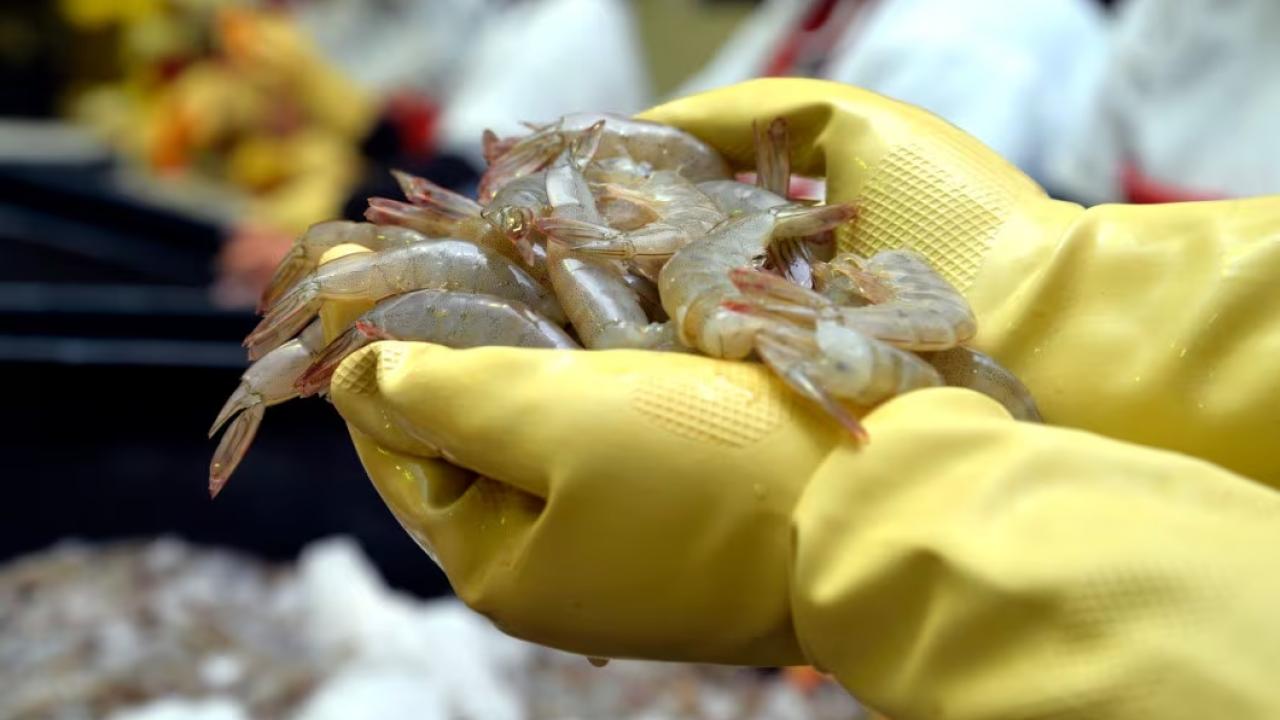
China and the US, the two main destinations for local shrimp, have taken action against the crustacean, and now a suspension from Brazil has been added.
2024 has not been a comfortable year for Ecuadorian shrimp in its destination markets and the sector's projections show a year-end in the red for the product that leads Ecuador's non-oil and non-mining supply.
Shrimp exports generated US$ 5.191 billion for the country from January to September, but it will end 2024 with a new barrier that will affect its exports: Brazil suspended the import of Ecuadorian shrimp as of Monday, December 9 due to alleged sanitary "irregularities", and joins the United States and China, which this year have applied other restrictive measures such as suspensions or tariffs on local shrimp.
In the case of China, that market absorbs 52% of Ecuadorian shrimp exports.
FOUR MONTHS BLOCKED BY CHINA
Of these three countries, the only one with which the disputes have been resolved is with China, which blocked imports from nine Ecuadorian companies for four months - from February to early June 2024 - due to alleged detections of sodium metabisulfite levels above the permitted levels in shrimp shipments between February and March of this year.
The suspension was lifted on June 6, but as of the latest figures published by the National Chamber of Aquaculture (CNA), in October 2024, exports to the Asian giant had not yet recovered and showed a 12% drop in export volume and 13% in foreign currency.
In addition, the Chinese market has contracted dramatically, says José Antonio Camposano, president of the CNA.
He explains that this has motivated Chinese importers to seek to consume almost all of their inventories before resuming imports from Ecuador.
“Today, although there is a slight recovery, it is mainly motivated by demand in view of the Chinese New Year.”
ADDITIONAL TARIFFS FOR ENTERING THE UNITED STATES
With the United States, it is still pending to know whether a final ruling by the authorities of that country will be reversed, which set additional tariffs on Ecuadorian shrimp following the results of an investigation for alleged dumping and subsidies initiated on October 25, 2023 based on a report by the United States International Trade Commission (USITC) that was released before January 16 and determined “reasonable indications” that the US industry was suffering material damage due to imports of frozen warmwater shrimp from Ecuador and Indonesia.
“They are allegedly sold in the United States at a price below fair value and subsidized by the governments of Ecuador and Indonesia, and imports of frozen warmwater shrimp from India and Vietnam are allegedly subsidized by the governments of India and Vietnam,” the commission concluded.
The investigation period was from January 1, 2022, to December 31, 2022, according to the preliminary report dated March 25 and published in the United States Federal Register on Tuesday, April 2, 2024.
A preliminary ruling in the subsidy investigation last April set additional tariffs for Ecuadorian exporters: 13.41% for Santa Priscila, 1.69% for the National Society of Galapagos (Songa) and 7.55% for all other Ecuadorian exporting companies. However, following an appeal filed on April 19, the percentages have been lowered since May for Santa Priscila to 3.57%, for Songa to 4.41% and for other exporting companies to 3.78%.
Meanwhile, last October the United States finally determined that Ecuador would not be sanctioned for dumping , but the tariffs preliminarily set for subsidies were maintained, which the country is trying to reverse.
Following this final decision, Camposano points out that “it is very clear that Ecuador is not engaging in any type of unfair competition. We maintained this position at the beginning of these accusations and we maintain it now.”
The United States is the second best destination for Ecuadorian shrimp. From January to October, Ecuador exported 15.50% of its production to that country, however, there is a 25% drop in volume and 19% in income, according to figures from the CNA.
PREVENTIVE SUSPENSION IN BRAZIL
Regarding Brazil, the notification from the Government of that country arrived on December 5th and the Ministry of Production, Foreign Trade, Investments and Fisheries reported on December 6th that the dialogue between the health authorities of both countries remains open and that the Undersecretariat of Quality and Safety (SCI) is working on the necessary actions to lift this measure.
The State Department explained that through an official letter from the Ministry of Agriculture, Livestock and Supply (MAPA) of Brazil, the preventive suspension of imports of farmed shrimp to Brazil was notified, starting December 9. In the notification, they indicate that this suspension is based on preliminary and not conclusive findings.
In response to this, the Ecuadorian Ministry of Production indicated that it received a visit from the MAPA technical mission from November 10 to 15, who “highlighted the work of the SCI and the exporting establishments in terms of safety”; however, the sanction was given.
Ecuador reported 1,214,105 tons exported during 2023, in terms of farmed shrimp production and Brazil represented 0.08% of total national production.
For Camposano, what happened with Brazil is very different from the other cases, as he claims that in an untechnical and illegal manner they are trying to block the entry of Ecuadorian shrimp into that country despite the fact that all the sanitary requirements that that country has imposed on it based on the technical dialogue between the authorities are being met.
“In the face of an outrage of this magnitude, our sector has requested that appropriate retaliatory measures be taken.”
This is nothing new for Camposano and for Ecuadorian shrimp. The head of the CNA said that Brazilian producers have made use of the judiciary and legislative branches to try to block Ecuadorian shrimp.
Since 2018, Ecuador has only been able to sell two types of shrimp products to Brazil: peeled and deveined shrimp and cooked shrimp. Regarding retaliatory measures, he revealed that the sector will formally request the Government “that Ecuador not negotiate any type of agreement with Brazil, that there not be any type of tariff concession for products coming from that destination.”
He concluded that, in general, all export products are subject to health controls, since these standards evolve over time.
“Therefore, it is our responsibility to demonstrate sufficient adaptability to meet the requirements of each of our markets. This is why the Ecuadorian shrimp sector has managed to position itself as a high-quality product, precisely because of compliance with all these standards.”
Meanwhile, the year-end projections for the sector are not encouraging. Camposano points out that, as shown by the statistics, the sector is experiencing a marked slowdown that has led to a reduction in production and exports. He estimates that “by the end of this year we will see a drop in volume of around 4% and a drop in turnover of around 8%.”









